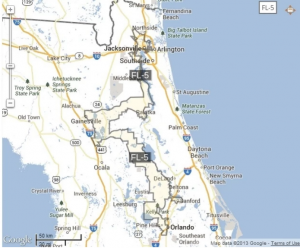This November, the United States will go to the polls to elect the entire House of Representatives and about one third of the Senate. The elections matter for a number of reasons including the possible impeachment of President Trump which I wrote about back in January.
State of the polls
This afternoon I checked the numbers in realclearpolitics, a website, and they show Republicans slightly ahead in both houses but also clearly show how the Democrats could potentially prevail.
The basic idea behind the system is that the country re-elects the entire house every two years so that it could track the popular mood. The Senate only changes slowly to bring stability into the system. In practice, this is not actually working very well for two reasons. In the first place, voting patters in much of the country simply do not change very often despite what is happening so in practice there are very safe seats for Democrats and Republicans in many places. I am, for example, registered to vote in Cambridge Massachusetts and am represented by Democrat Katherine Clark. The district will most likely be Democratic for a long time.

Another, related issue is that since the 2010 Census, the congressional districts have been deliberately drawn in many parts of the country for the benefit of whichever party is in power in the State Legislature. The practice of drawing the districts in a highly politicized way is called gerrymandering. Often such districts are drawn to concentrate likely voters or to spread them out and mix them with people who will most likely vote the other way. Often these moves have a strong racial connotation and have been challenged in the courts.
The net result of al this is that there are seats which are considered safe for both Republicans and Democrats and others considered in play. Real Clear Politics shows the Democrats with 197, Republicans with 206 and 32 seats in the category they call “Toss Ups”. of the 32, 28 currently have a Republican and only 4 currently have Democrats.
In the Senate, there are 35 of the 100 seats at play in November and Real Clear Politics believes that 17 of these are what it calls “safe”. California’s Senior Senator, for example, is Dianne Feinstein who is actually being challenged by another Democrat, Kevin de León, due to California’s election law. In either case the seat will remain democratic.
In the Senate they are predicting 44 seats for the Democrats and 48 for the republicans with 8 “Toss Ups” in Arizona, Florida, Indiana, Missouri, Nevada, North Dakota, West Virginia, and Tennessee.

In addition to the House and the Senate, 36 States will also hold election for the State Governors and again goes through which seats it thinks are safe and which are in play. In New York, for example, the web site has Andrew Cuomo, son of another New York Governor as a safe bet. Governor Cuomo is also mentioned often as a potential challenger to Donald Trump in 2020. The connection between the house and the Senate is that the election of a governor can drive up turn out which then will affect the results.
The biggest question for November is in fact how many people will come out to vote. In 2014, for example, only 36.4 % of eligible voters turned out in the mid term elections.
What is clear is that those voters who identify with trump and his ideas about the future of the country will come out to vote. The real question is what everyone else will do?

